 Rosés are pretty, but they’re not the most complex wines; they’re not powerful or full-flavored. In fact, they’re delicate, light, uncomplicated and easy to drink without much contemplation. Perhaps that’s why rosé consumption is on the rise.
Rosés are pretty, but they’re not the most complex wines; they’re not powerful or full-flavored. In fact, they’re delicate, light, uncomplicated and easy to drink without much contemplation. Perhaps that’s why rosé consumption is on the rise.
In France, where wine consumption has declined in recent decades, consumption of rosé has doubled in the last 20 years. Rosés now account for 30% of all wine consumed in France, while white wine comes in a distant second with just 17%.
Wine was first introduced to France around the founding of Marseille by Phoenicians in 600 BC, in what is now the province of Provence. There are 600 wineries in Provence, drawing from 65,000 acres, to annually produce 185 million bottles, of which 89% (165 million bottles) are rosé.
Provence vineyards stretch from the cooler Mediterranean coast to the warmer inland foothills where the climate is influenced by the hot, dry Mistral winds. The five main varieties of grapes are Cinsault, Syrah, Grenache, Mourvedre and Tibouren. The first four are common to the Southern Rhône, while Tibouren is a local variety. Also allowed are red Carignan, Cabernet Sauvignon and Counoise, and the white Vermentino, Ugni Blanc, Clairette, Sémillon, Bourboulenc, Grenache Blanc and Sauvignon Blanc.
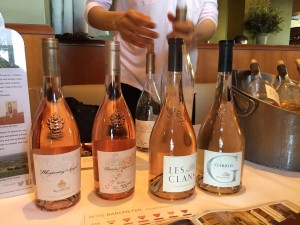
The U.S. is the largest importer of Provençal rosés (31%). Between 2010 and 2013 U.S. imports of Provençal rosés doubled to 6.3 million bottles.
Why the renewed popularity? Just a guess, but I’d say it’s because they’re light and refreshing (like white wines), they’re the prettiest wine in bottle and glass, and you don’t have to expostulate over its (lack of) complexity.
I offer the following dozen recommendations with the caveat that rosés are too often served overly chilled, which suppresses the delicate aromas.
Château du Galoupet Cru Classé, 2014 Côtes de Provence: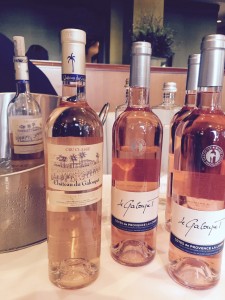
A blend of Cinsault, Grenache, Syrah, Mourvedre, and Tibouren. Cooked salmon color. Aromatic hyacinth and strawberry nose, fresh dry strawberry-raspberry flavors with good minerality and vibrant acidity. 10,000 cases. $20.00. 92 points.
Tête de Cuvée Inspire Cru Classé, 2014 Côtes de Provence:
A blend of Tibouren and Syrah with a pale salmon pink. Very intense raspberry, red currant and citrus nose carries through to the dry palate. 500 cases. $26.00. 90 points.
Château Gabriel, 2014 Côtes de Provence:
Salmon orange. A blend of Grenache and Cinsault. Round, aromatic, with good intensity of white peach character and mineral undertones, dry on the palate and long in the finish. 1,250 cases. 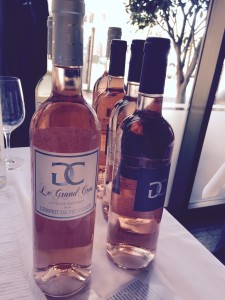 $17.00. 90 points.
$17.00. 90 points.
Le Grand Cros, L’Espirit de Provence, 2014 Côtes de Provence:
A blend of Grenache and Syrah. Vibrant, dry, with strawberry and red currant flavors, firm structure and perfect balance. 650 cases. $16.00. 90 points.
Château Roubine Cru Classé, Cuvée Premium, 2014 Côtes de Provence:
A blend of Cinsault, Grenache, Cabernet Sauvignon, Carignan, Tibouren, Syrah and Mourvedre. Like sticking your face in bouquet of dried flowers, delicate strawberry-raspberry fruit, tart acidity, long finish. 4,200 cases. $18.00. 90 points.
Château Gassier, 946, 2013 Côtes de Provence Sainte-Victoire:
A blend of Syrah, Grenache and Rolle, this is a pale salmon colored rosé with floral-herbal-banana overtones on the nose. Tart and dry with delicate cherry and light earthy notes on the palate. 85 cases. $50.00. 90 points.
Château Les Valentines, 2014 Côtes de Provence:
A Grenache-Cinsault blend. Pale orange. This one jumps out of the glass with cranberry and fennel notes. Dry and moderately intense if you don’t over-chill it. 2,500 cases. $26.00. 89 points.
Rosé D’Aurore, 2014 Côtes de Provence:
Pale peach color. Grapefruit, blood orange and jasmine tea notes in the nose, delicate, citrusy palate and finish. 2,500 cases. $18.00. 88 points.
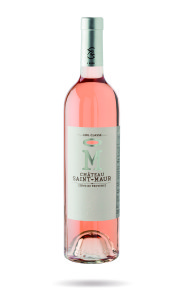
Château Saint-Maur Cru Classé, Cuvee M, 2014 Côtes de Provence:
A blend of 25% each of Grenache, Tibouren, Cinsault and Syrah. A dry wine with tart strawberry-raspberry-citrus character, and decent intensity if not overly-chilled. Superb with salmon. 4,100 cases. $25.00. 88 points.
Hecht & Bannier 2014 Côtes de Provence:
A blend of Cinsault, Grenanche and Syrah. Pale pink. A lean, tart wine with strawberry, lime and red currant flavors and light minerality. 12,500 cases. $18.00. 88 points.
Château Saint-Maur Cru Classé, 2014 Clos de Capelune, Côtes de Provence: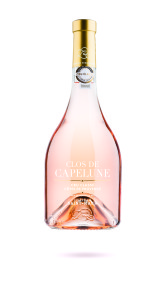
A blend of 35% Grenache, 30% Cinsault, 20% Mourvedre, 15% Rolle. Our tasting panel was split on this one, with its adherents and detractors. It’s all about the nose. Those that liked it found thyme and lavender, while those that disliked it found shrimp and petroleum. Which just points to how subjective wine tasting is. I was a fan…of the nose. On the palate it is a bit austere, acidic and thin. 125 cases. $65.00. The contingent that liked it averaged 87 points.
Château Saint-Maur Cru Classé, 2014 L’Excellence , Côtes de Provence:
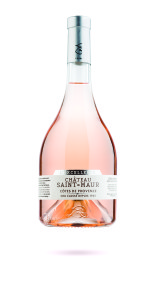 A blend of 30% Grenache, 30% Cinsault, 30% Mourvedre, 10% Rolle. A pretty pale salmon leaning more toward the orange range of the spectrum. The nose calls to mind strawberries, while on the palate it’s dry, tart and austere, with light herbal tones (dried thyme) and a dusty mineral finish. It improves with airing. 500 cases. $45.00. 86 points.
A blend of 30% Grenache, 30% Cinsault, 30% Mourvedre, 10% Rolle. A pretty pale salmon leaning more toward the orange range of the spectrum. The nose calls to mind strawberries, while on the palate it’s dry, tart and austere, with light herbal tones (dried thyme) and a dusty mineral finish. It improves with airing. 500 cases. $45.00. 86 points.
